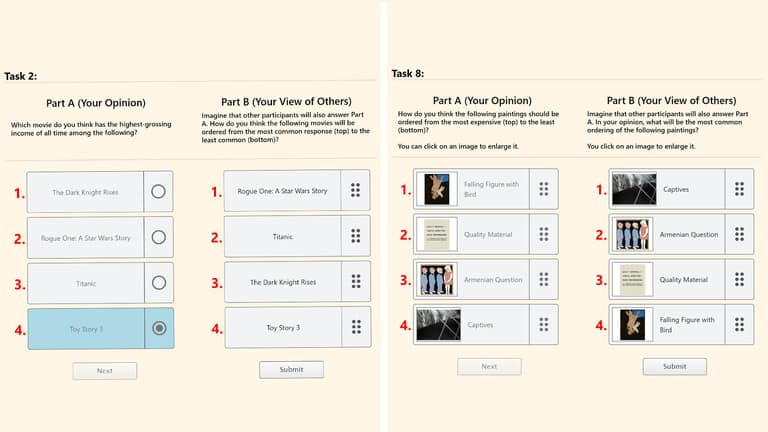Imagine you are asked to rank the counties in Pennsylvania in terms of number of COVID-19 infections. Or you may be asked to rank the following cities in Pennsylvania based on their populations: Harrisburg, Allentown, Erie and State College.
What would your answer be? How do you think others would answer these questions?
A new algorithm developed by a team of researchers led by Hadi Hosseini, assistant professor at the Penn State College of Information Sciences and Technology, can reach the true answer to this and similar questions by combining a respondent’s own vote or opinion with their prediction about how others will answer.
Hosseini explained that a person knowledgeable of Pennsylvania would most likely know the answer to the above question. They may also predict that other less-informed participants, on average, would provide the incorrect ranking. Conversely, uniformed participants are most likely not aware of the correct answer and may give a wrong ranking of these cities.
“This is the crux of our algorithm: using the extra information that informed participants have to correct for such errors,” he said.
The researchers’ method expands on an existing approach of soliciting wisdom of a crowd, called surprisingly popular method, which has been used in scenarios like political pollsters predicting the outcome of elections and researchers predicting the winners of NFL games. Like Hosseini’s model, surprisingly popular method asks respondents to provide two answers per question: what their own opinion or vote is, and how they predict that others will vote. The technique takes advantage of the knowledge of a small group of experts in a larger crowd to point to the correct answer.
However, the surprisingly popular method has been limited to predicting a single correct answer to a posed question, such as “What is the capital of Pennsylvania?” or “How much money did the movie ‘Titanic’ make at the box office worldwide?” Hosseini’s model extends this concept to ranked choices or alternatives.
“One does not require to fully elicit complete rankings and predictions of others,” said Hosseini. “We are able to recover the ground truth by combining both the vote and predictions without eliciting full distributions over all possible n! rankings. And this is true for recovering either only the top choice or the full ranking.”
The method could potentially be applied to improve forecasting with ranked choices, such as in exit polls for predicting outcomes of political elections. According to Hosseini, by asking voters secondary questions through his method, fewer samples would be required compared to standard exit polls that rely on random sampling.
Hosseini’s approach also significantly outperforms conventional voting methods, such as the simple majority rule, that do not ask respondents to predict how others will respond.
“It turns out that prediction of others’ votes is more important than the actual votes,” Hosseini said. “This is very crucial because it posits that asking what you think about other people’s opinion is a more critical question than asking their own opinion.”


